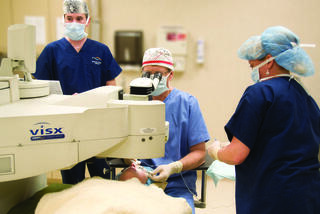TLC Vision



Eye-care services
Year of Investment
2010
Sector(s)
Healthcare
Status
Realized
Website
tlcvision.com(Link opens in new window)Headquarters
West Palm Beach, FL & Minneapolis, MN
TLC Vision was one of the premier eye-care services companies in North America. At the time of our investment, TLC comprised three partially integrated divisions: Vision Source, TLC Laser Eye Centers and Sightpath Medical.
Investment Summary
We were introduced to TLC Vision as part of a thematic effort around the acquisition of distressed assets during the financial downturn. After sponsoring its Chapter 11 restructuring in 2010, we focused on generating value by separating the three businesses.

Bankruptcy Process
After several months of negotiation and diligence, Charlesbank structured and sponsored the bankruptcy plan of reorganization; the company’s pre-petition debt was all repaid at par.
Operating Re-Alignment
Working with management, Charlesbank helped to reorganize TLC into separable business units, disentangling executive and operational management and creating distinct capital structures. We realized our monetization plan and created meaningful efficiencies and cost-reduction opportunities in each business.
Acquisitions
We completed a number of small acquisitions at both TLC Laser Eye Centers and Sightpath Medical to improve geographic presence.
Sales & Marketing Focus
During our hold period, we doubled the size of the field sales organization and invested capital in a new business line to fuel growth at Sightpath.
Exit
In 2011, we sold the Vision Source optometry division, in 2014 we merged the laser centers business with LVI, and in 2022 we sold our remaining position in Sightpath, a provider of mobile ophthalmic services for cataract and refractive surgery.
Case Studies are for informational purposes only and intended for management teams and owners considering partnering with the Firm. They should not be relied upon for investment decision-making. Information regarding the Firm’s investment products is not provided on the website and is only offered privately. Case Studies are not to be considered a complete list of all investments made or currently held by the Firm. They may contain opinions of former and present portfolio company executives; such executives are not compensated by the Firm directly for such statements, but all such persons had or continue to have economic relationships with the Firm, including potential incentive awards for performance. It should not be assumed that the portfolio companies discussed in these case studies were profitable or that future portfolio companies or experiences will be comparable.